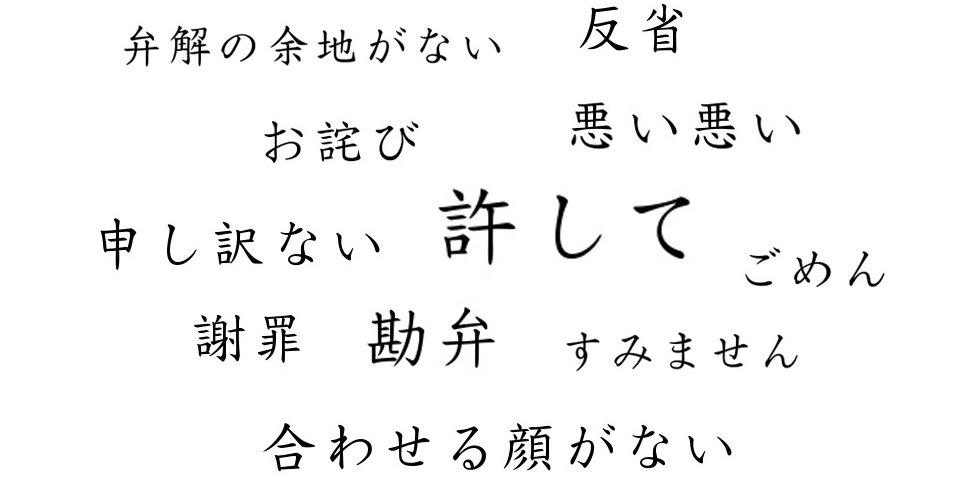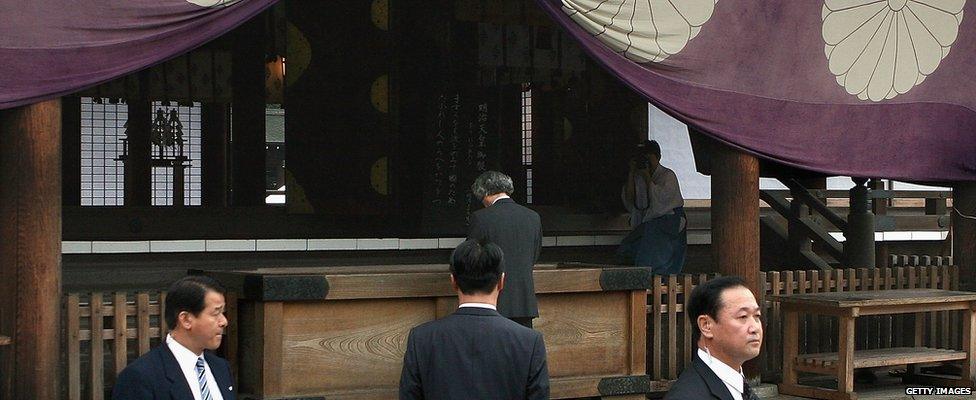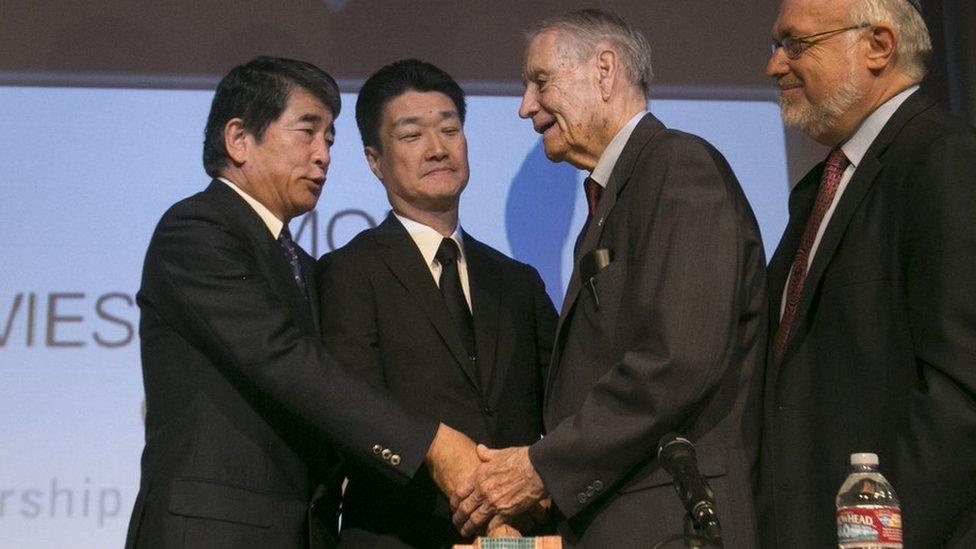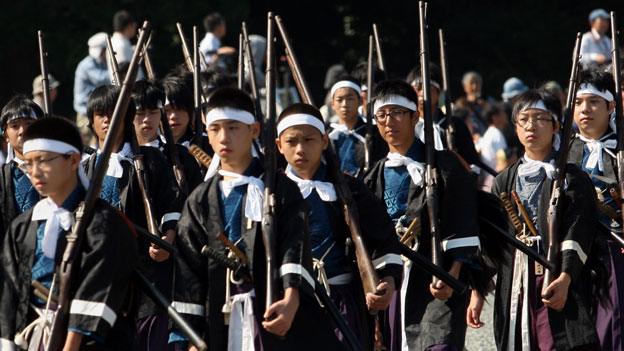The many ways to say sorry in Japanese
- Published

Japanese Prime Minister Shinzo Abe has issued a much-anticipated statement marking the 70th anniversary of the end of World War Two. He gave a "heartfelt apology", but as the BBC's Mariko Oi explains, that is only one of the many ways you can express remorse in Japanese.
In English, you either say "sorry" or "apologies". In Japanese, there are at least 20 different ways.
One of the most casual and most frequently used words is "gomen" ごめん. You can make it more formal by saying "gomen-nasai" ごめんなさい or more friendly with "gomen-ne" ごめんね. "Warui warui" 悪い悪い or "my bad" is also a very casual way to say sorry.
"Sumimasen" すみません, which can be translated as "excuse me", also works as an apology depending on how it is used. "Yurushite" 許して is to ask for forgiveness and "kanben" 勘弁 can be used to plead for mercy and both terms are used much more casually than in English.
Viewpoint: Why do Japan’s apologies get disregarded?
More formal ways to apologise include "moushiwake nai" 申し訳ない and "shazai" 謝罪. But I use both terms quite often in business emails not because I really feel bad but just to be polite. For example, I may begin my correspondence with "I am sorry for the delay in getting back to you" and end it with "I apologise for creating extra work for you" even if it only took me a few days to respond and even if I was merely asking them to do what's already in their job description.
'I am reconsidering the past'
If I genuinely want to apologise, at least three or four different phrases would appear in one short email. I may be "too embarrassed to face you" 合わせる顔がない and "I have no excuse" 弁解の余地がない for whatever I did.

Prime Minister Junichiro Koizumi's visit to Japan's shrine to war dead was seen as undermining his "owabi" apologies
For the post-war apologies, Japanese leaders have used the word "hansei" 反省 much more frequently. In the English transcript, it reads "remorse" but I would translate it as "regret" and use it, for example, for failing to be more productive on my day off.
A student would be told to "hansei" for forgetting to do one's homework. Its Chinese or Korean equivalents - "fǎnshè" or "banseong" respectively - also mean "reflection on" or "reconsideration of" the past.
The 1995 statement, external by former Prime Minister Tomiichi Murayama was considered landmark because it included the word "owabi" お詫び which is one of the most formal ways of apologising. He said his country had caused "tremendous damage and suffering" through its "colonial rule and aggression" and expressed "deep remorse" and stated his "heartfelt apology".
Ten years later to mark 60 years since the end of the World War Two, the then Prime Minister Junichiro Koizumi also used the term "owabi". Mr Koizumi's apology, however, was overshadowed by his repeated visits to the controversial Yasukuni shrine where all the war dead - including Class A war criminals - are enshrined.
The current Prime Minister Shinzo Abe also included the word "owabi" in his war anniversary statement but he had indicated that he would not visit the Yasukuni shrine on Saturday.
- Published19 July 2015

- Published18 October 2012

- Published14 March 2013
